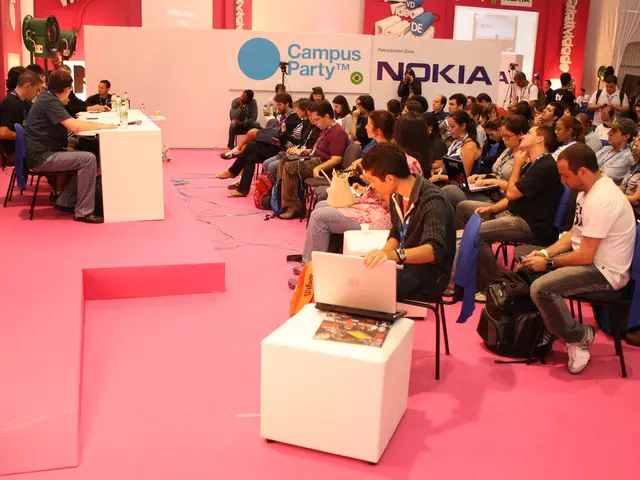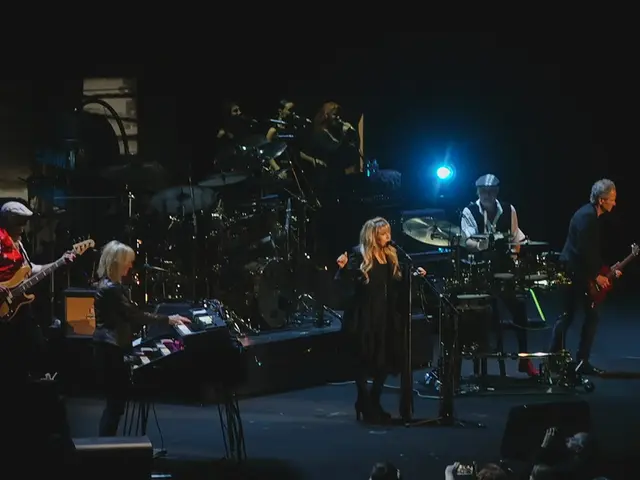City Development and the Struggle for Optimal Transport Solutions
India is embarking on a transformative journey towards modernising its urban transport system, with a focus on moving people efficiently, sustainably, and affordably. This shift is reflected in various initiatives aimed at empowering Unified Metropolitan Transport Authorities (UMTAs), promoting the use of electric buses, and exploring the potential of modern tramways and metro rail.
Empowering UMTAs and Integrated Planning
Under the Metro Rail (Amendment) Act, UMTAs in India are being granted statutory planning, fare-setting, and data-sharing powers. The aim is to integrate land-use, parking, and transit plans into a single Master Mobility Plan within three years, ensuring a comprehensive approach to urban mobility.
Shifting Focus from Vehicles to People
The National Urban Transport Policy (NUTP), initially formulated in 2006 and revised in 2014, marked a significant shift in India's urban transport policy. The focus moved from "moving vehicles" to "moving people," signalling a commitment to prioritising public transport and sustainable urban mobility solutions.
Pioneering BRT Systems and Trunk-Feeder Design
Cities like Curitiba in Brazil have pioneered innovative solutions, such as the "trunk-feeder" design and zoning along high-capacity corridors. Approximately 54 percent of residents within 500 metres of a BRT stop in Curitiba.
Adopting Mode-agnostic Life-Cycle Cost Tendering
To ensure sustainable urban transport projects, the government is mandating Life-Cycle Cost (LCC)-based procurement, covering carbon and congestion externalities. This approach will be piloted through competitive bids between tram, Bus Rapid Transit (BRT), and e-bus corridors on identical alignments.
The Rise of the National Common Mobility Card
The National Common Mobility Card (NCMC) aims to provide interoperable ticketing for various modes of transport, including metro, bus, and suburban rail. This initiative will facilitate seamless travel for commuters across different cities.
The Gati Shakti National Master Plan and Multimodal Integration
The Gati Shakti National Master Plan (2021) aims for multimodal integration in urban transport, envisioning a future where different modes of transport work together to provide efficient, sustainable, and affordable urban mobility solutions.
Sustainability, Affordability, and Efficiency: A Comparative Analysis
Modern tramways, electric buses, and metro rail each offer distinct advantages and trade-offs in terms of sustainability, affordability, and efficiency for urban mobility in India.
| Aspect | Modern Tramways | Electric Buses | Metro Rail | |----------------|-----------------------------------------------|------------------------------------------------------|----------------------------------------------------------| | Sustainability | Electric-powered, low emissions, quieter, and promote non-polluting urban transport; infrastructure-intensive with moderate environmental footprint; typically lower energy consumption per passenger compared to buses. | Zero tailpipe emissions, significantly reduce air pollution relative to diesel buses; benefits depend on electricity source; increasingly supported by government incentives. | Electric-powered with high passenger capacity reducing per capita energy use and emissions; significant environmental impact during infrastructure construction; long-term benefits in cutting urban congestion and vehicle emissions. | | Affordability | Moderate capital cost; less expensive than metro but higher than buses; medium to high operating costs due to track and vehicle maintenance; suited for medium-demand corridors. | Lower initial investment compared to rail systems; flexible routes reduce infrastructure cost; operating costs dropping with technology improvements and government subsidies; good affordability for expanding urban transit networks. | High initial capital expenditure for construction of stations, tunnels, and vehicles; higher operating costs but economies of scale with high ridership make per-trip cost competitive over time; best suited for very high-demand corridors. | | Efficiency | Good for medium-capacity routes with frequent stops; fixed rails can offer smoother, faster rides than buses due to dedicated corridors but less flexible; integration into city streets may cause traffic conflicts depending on design. | Flexible routes adapt to changing demand; can use bus lanes for speed but generally lower average speeds and capacity compared to rail; suitable for feeder and secondary routes. | High capacity and speed with dedicated right-of-way, avoiding surface traffic delays; extremely efficient for densely populated corridors and long-distance urban travel; reduces congestion drastically. |
Context for India
India is heavily investing in electric buses with large-scale procurement plans, leveraging existing road infrastructure and government subsidies to achieve fast deployment and affordability in many cities. Metro rail projects have been expanding rapidly in major metros, offering high-capacity, energy-efficient urban transport for very dense corridors but with much higher upfront costs and longer development timelines. Tramways are less widespread in India but have potential for medium-demand urban corridors where metro rail is too costly and buses are less efficient. They can form part of integrated sustainable mobility ecosystems alongside buses and metros.
Electric Buses: The Most Affordable and Flexible Option
Currently, electric buses are the most affordable and flexible sustainable option for Indian cities, especially given government support and existing road infrastructure.
Metro Rail: The Highest Efficiency and Capacity
Metro rail offers the highest efficiency and capacity, ideal for very dense urban corridors despite higher cost.
Modern Tramways: A Middle Ground
Modern tramways provide a middle ground with better sustainability and ride quality than buses at a lower cost than metro but require dedicated infrastructure.
Balancing Sustainability, Affordability, and Operational Efficiency
The choice between electric buses, metro rail, and modern tramways depends on corridor demand, urban form, and investment capacity. Indian urban planners typically deploy a multi-modal approach, integrating all three to balance sustainability, affordability, and operational efficiency.
The National Last-Mile Connectivity Mission
The National Last-Mile Connectivity Mission aims to subsidise e-rickshaws, bicycle-sharing, and pedestrian infrastructure within 1-kilometre radius of transit hubs, funded via congestion pricing in central business districts.
Addressing the Deficit in Buses and Improving Women's Labor-force Participation
India's headline deficit in buses remains stark, with 200,000 buses required versus around 35,000 currently on the road. Affordable mass transit can help reduce "spatial poverty traps," improving women's labor-force participation by up to 15 percentage points.
Government Initiatives for Electric Mobility
The Government of India aims to seed 38,000 electric buses through the PM e-Bus Sewa-Payment Security Mechanism (PSM) and 14,000 electric buses through the PM Electric Drive Revolution in Innovative Vehicle Enhancement (PM e-DRIVE).
The Importance of Urban Public Transport Investment
Capital-intensive metro systems still dominate budgetary outlays, while lower-cost surface modes like trams, trolleybuses, and Bus Rapid Transit (BRT) receive intermittent attention. However, every rupee invested in urban public transport returns approximately ₹4 via productivity, health, and time savings (NITI Aayog, 2023).
Access to Mass Transit in India
Currently, only 37% of urban residents in India have easy access (≤500 metres walk) to mass transit, compared to over 50% in Brazil and China.
The Future of Urban Mobility in India
Kochi is poised to pilot India's first modern light-tram corridor, leveraging offset grant from German KfW and carbon-credit financing. Shifting 20% of two-wheeler trips to electric buses could avoid 6 million metric tonnes of CO2 annually by 2030 (MoHUA model).
The journey towards sustainable, affordable, and efficient urban mobility in India is well underway. With a focus on empowering UMTAs, promoting electric buses, and exploring the potential of modern tramways and metro rail, India is poised to redefine urban transport for a more sustainable and inclusive future.
- The Government of India is considering mandatory Life-Cycle Cost (LCC)-based procurement for urban transport projects, covering carbon and congestion externalities, in an effort to ensure sustainable urban mobility solutions.
- The National Common Mobility Card (NCMC) is being introduced to provide interoperable ticketing for various modes of transport, including metro, bus, and suburban rail, facilitating seamless travel for commuters across different cities.
- In the context of Indian cities, electric buses are currently the most affordable and flexible sustainable option, given the government's support and existing road infrastructure.
- Modern tramways are being explored as a potential solution for medium-demand urban corridors, offering a middle ground between electric buses and metro rail in terms of sustainability, ride quality, and infrastructure requirements.




